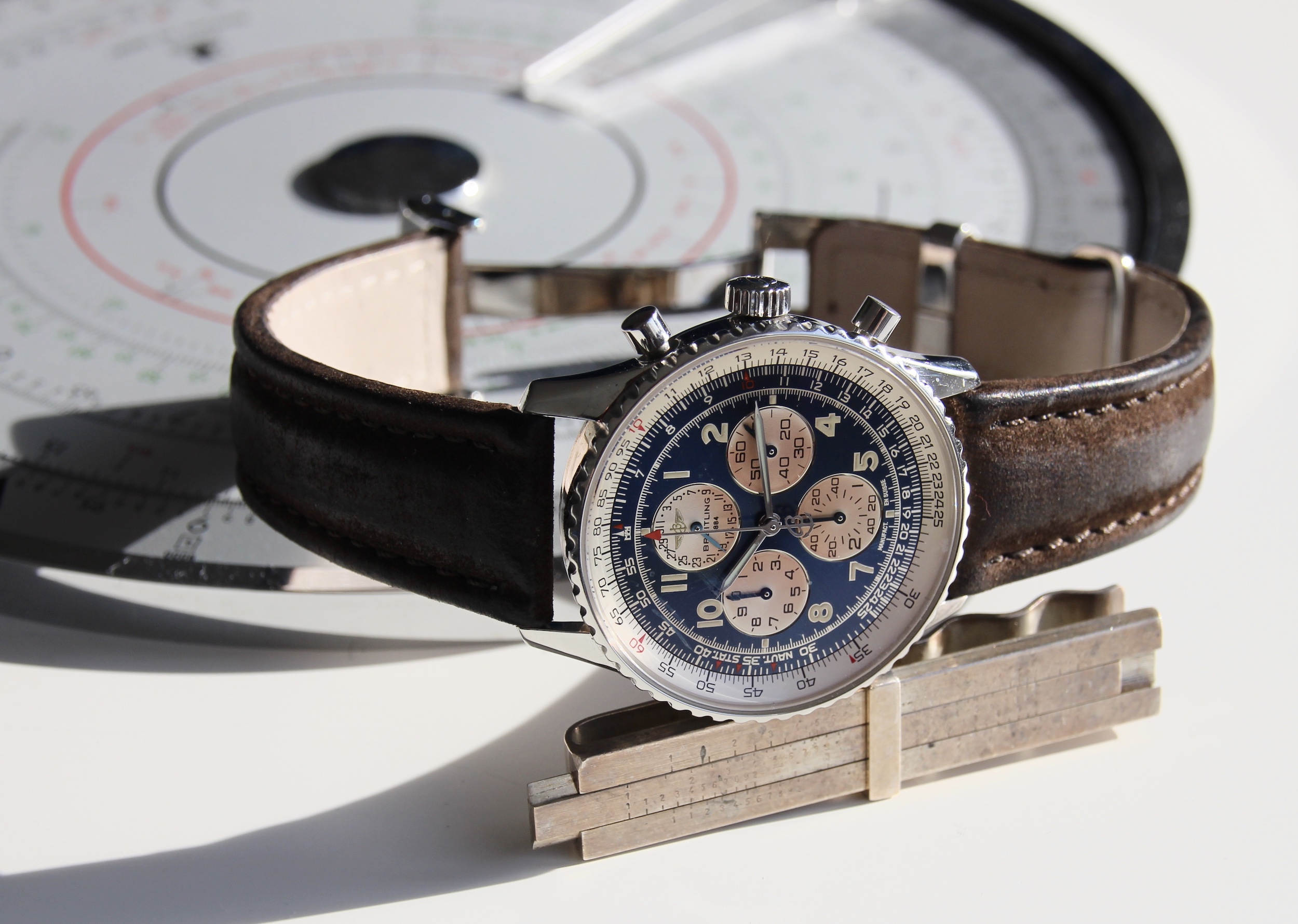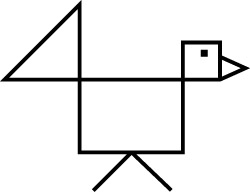Back in the early 80s I finished school in the last grade which did the math exams using logarithmic tables and slide rules. Of course I used only electronic calculators (RPN for those of you who care) since then, but I kept on admiring people – from my father to the legendary women and men at the NASA in the 60s – who exceeded the limits by just using slide rules. So, when I developed my love for timepieces, it was obvious, that I needed a Navitimer.
At a watch fair I came across this Navitimer Airborne. Oh boy, what a dial! Very elaborate and even after years a pleasure to look at. The edges of the totalisers are chamfered, and yes, there are four of them. The top toti shows the date. Also, very unusually, the chronograph is laid out to show 10 minutes and 3 hours respectively. This is IMHO much better for most important timing applications (i. e. breakfast eggs) than the usual layout.
The movement below is a 2892 with a Dubois-Dépraz module, if you look at the side of the watch, you can see, that the crown and the pushers are not in one line. At 38mm it may be small by today’s standards, but although I also wear much larger watches, it fits my wrist perfectly.
So, what is this slide rule stuff all about? It may seem complicated, but it’s actually not. It’s extremely handy for currency conversions, where you set the bezel just once and then read the results around the bezel. On the wristshot, you can see, that the exchange rate of the swiss franc to the euro was (at the time) approx. 1.1, so e. g. 45 francs are ~40 Euro.
And finally, the Navitimer always reminds me of my father who kept throwing stones into wells and the like, stopping time until they reached the bottom, and then asking me to calculate how deep the well is.
PS: Produced between 1995-97 this watch is nearly 25 years old and has been for service just once …


Leave a Reply
You must be logged in to post a comment.